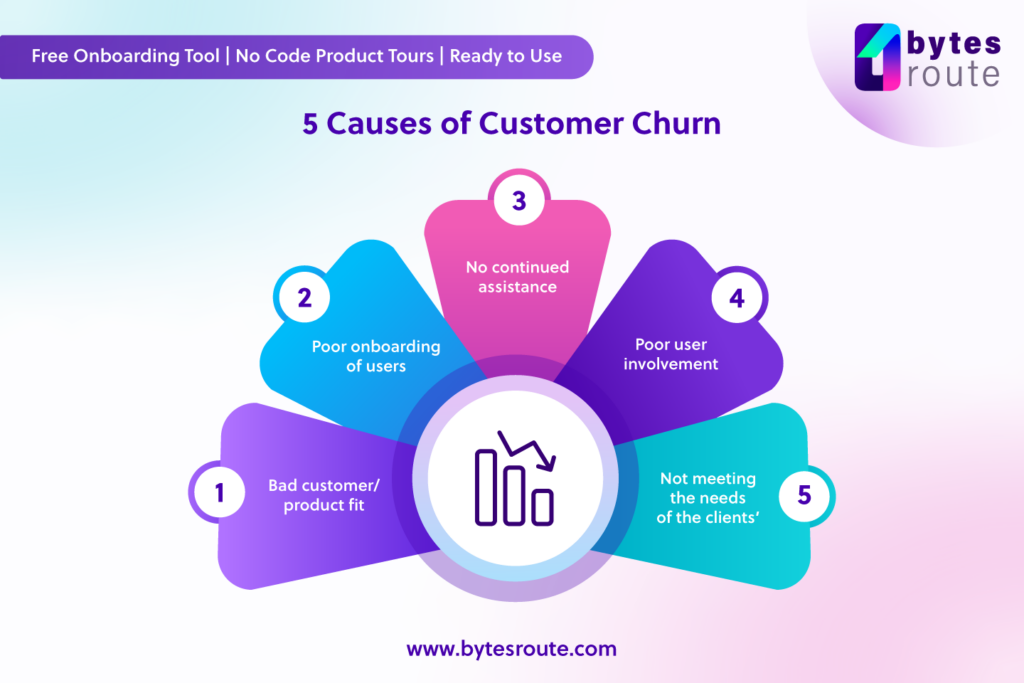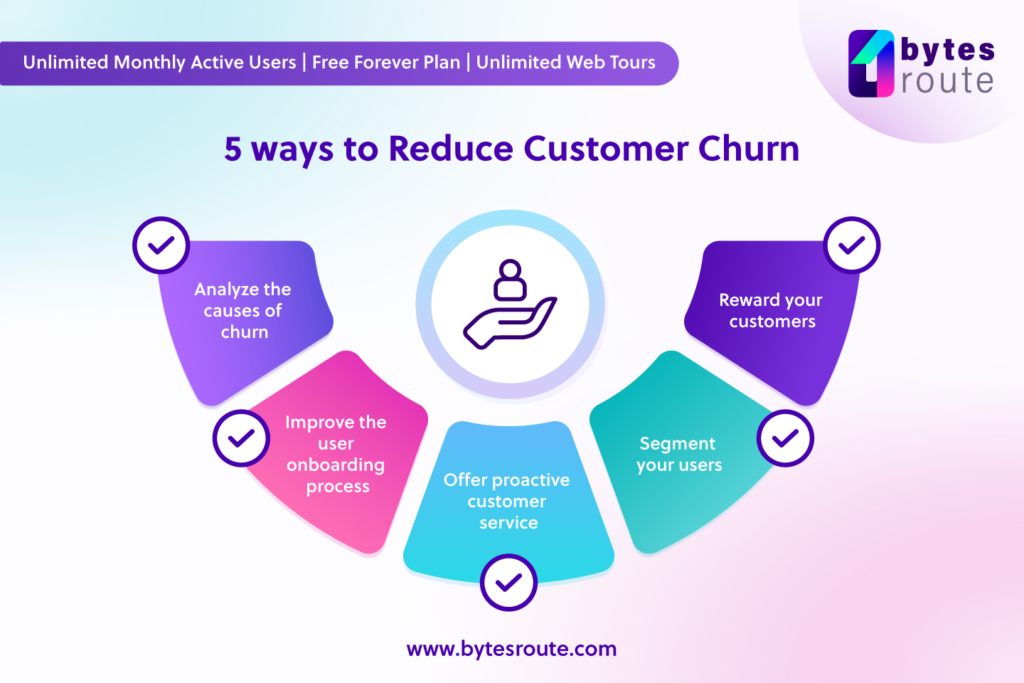What is customer churn?
Customer churn, also known as customer attrition, refers to the percentage of a company’s customer base that has stopped using and paying for the company’s product or service. It’s typically measured over a set period of time, such as a month, quarter, or year. But regardless of the method you use, you should go for a churn rate that is close to zero.
There are multiple reasons for customer churn. You may be failing to meet the needs of your target market because of issues such as a poor customer service experience, a lack of brand trust, or a product that falls short of expectations. In order to solve your churn issue, you must first identify its root causes.
Why does customer churn matter?
Lost customers are an issue for companies of all sizes and in all fields. A company’s growth is directly proportional to the amount of money it spends on customer acquisition. When a customer leaves, a lot of money is lost. Replacing them requires an investment of both time and energy. Predicting when a customer is likely to quit and providing them with incentives to stay can result in significant cost savings for a company.
Therefore, it is crucial to know what keeps consumers interested so that you can create retention strategies and implement operational procedures that prevent customers from leaving.
Churn prediction is essential for any subscription organization since even small changes in churn can have a major effect on revenue.
How to calculate the customer churn rate?
Select a time interval, such as a month or a year, in order to calculate the churn rate. Also, you have to know how many customers you had at the beginning of the time period and how many you lost.
To calculate the churn rate, use the following formula:
| (Lost Customers/Total Customers at the Beginning of the Time Period) x 100 = Customer Churn Rate |
What are the causes of churn?

loss of customers is a common issue for many companies. They launch a product, see some initial success financially, and then focus entirely on customer acquisition. They are too busy enjoying their success to worry about realities like substantial client churn that all organizations face.
The principal causes of churn are:
1. Bad customer/product fit
Maybe the product is not meant for the target clients you thought your product or service was for.
2. Poor onboarding of users
The product could be too difficult to use, and it could cause users to give up when they first purchase it. Are you doing your best to educate your customers?
3. No continued assistance
If you want to keep your customers after their first onboarding experience, it’s important to keep good customer service and help.
4. Poor user involvement
We must promote the active participation of our customers, to keep them loyal to the product or service we offer. Actions like gathering and implementing changes thanks to feedback are great examples of involving users.
5. Not meeting the needs of the clients
Sometimes, the product will not meet the needs of the customers, and in turn, this can cause customers to churn.
For your business to remain viable and lucrative, it is essential to understand the main causes of client churn and how to modify your strategy to retain them. If you don’t adapt, you may lose.
How to reduce customer churn?
The financial impact of customer churn might be catastrophic for your company. Not only will losing a customer and the income they provide cost you money, but you’ll also have to spend time and money finding and onboarding a new customer to make up for the lost income.
If you want to save time and money, just keep your current customers happy. But what strategies might be applied to reduce the prospect of them leaving?
While there are many variables that might affect churn reduction, one of the most consistent trends that we see actually working is straightforward: pay attention to what your customers have to say and act on it.

There are many ways to reduce churn, but some of the most effective are:
Analyze the causes of churn
Getting to the bottom of a problem begins with identifying its origin. In order to do so, it is necessary to collect feedback and data from customers.
You can collect feedback by sending a personalized email, scheduling a call (if possible), or using a customer exit survey.
Improve the user onboarding process
When it comes to SaaS businesses, approximately half of the users that signed up for a free trial will use the product once and then never come back.
Why? Users may be hesitant to use a product because they don’t understand the benefits it could bring to their daily lives or businesses. This emphasizes the importance of a smooth onboarding process to your overall customer success.
Therefore, it is essential to improve your onboarding process and communicate clearly with your users as they move through the funnel if you want to reduce the impact of this issue. Customers are more likely to stick with you if you help them get the most out of what you sell.
Offer proactive customer service
If visitors are having trouble navigating your site or locating the information they need, they may decide to look elsewhere. They may become so frustrated that they no longer wish to deal with your company at all if this keeps happening.
Your customer service team can assist you in dealing with this by taking a proactive approach. This involves interacting with clients at specific moments in their journey, frequently through live chat, based on the actions they’ve taken so far. Your churn rate will go down and your customers’ satisfaction will go up because of this approach.
A great way to make the job of your customer service team easier is to use in-app product tours that address the most common issues users have. The biggest benefit of product walkthroughs is that they can be accessed at any time and however many times users need them.
Segment your users
In order to better target your consumers, it is helpful to divide them up into several categories. This will make it easier for you to identify which groups have a higher churn rate and you can start addressing their needs.
Reward Your Customers
Customers might be motivated to renew by offering incentives like price cuts or free product upgrades, which can make them feel appreciated. It may also lead them to inform their peers about you.
But keep in mind that it’s not necessary to break the bank to reward your customers. Sometimes, a personalized note is enough to make them feel valued.